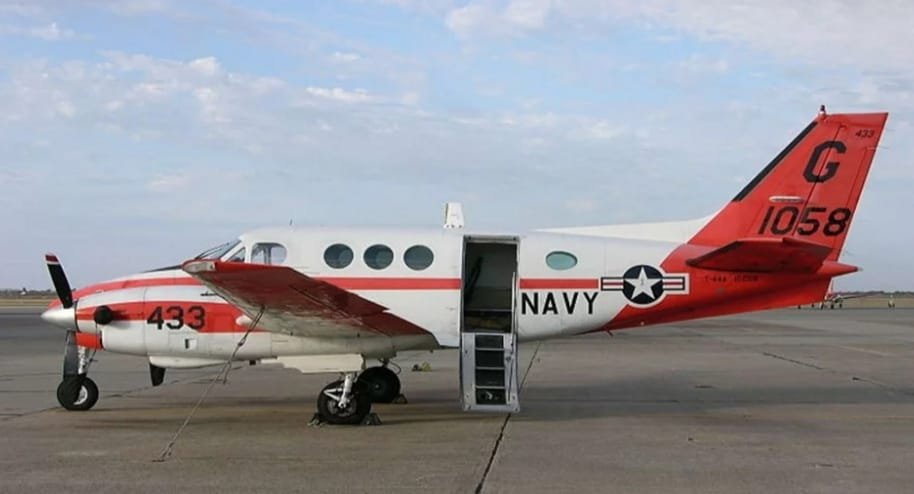
Textron Aviation Unveils Next-Gen T-54 Multi-Engine Trainer at FIA 2024
On July 22, 2024, Textron Aviation Inc., a subsidiary of Textron Inc., announced the launch of its new military multi-engine training aircraft, based on the robust and versatile Beechcraft King Air 260, at the prestigious Farnborough International Airshow (FIA).
On January 25 2024, the US Navy (USN) announced the selection of the Textron King Air 260 to replace the aging Beechcraft King Air 90, designated T-44 Pegasus, as its multi-engine trainer. The initial contract includes an order for 10 T-54s at a cost of USD 113 million, with options for up to 64 aircraft. These new trainers will be designated as the T-54A Multi-Engine Training System (METS).
Deliveries of the T-54A are scheduled to take place from 2024 through 2026. The retirement of the T-44s will begin six months after the first T-54 delivery, according to the USN. The T-54A will feature advanced ‘glass’ multifunction displays, automatic dependent surveillance-broadcast (ADS-B) transponders, weather radar, and other modern systems that the T-44s lack.
“The new METS aircraft will give us the ability to train pilots across the services with an advanced platform that better represents fleet aircraft,” said Captain Holly Shoger, the USN program manager. “The T-54A will include the latest avionics and navigational updates, such as virtual reality and augmented reality devices.”
The T-54A will be used to train pilots from the USN, US Marine Corps (USMC), and US Coast Guard, who are preparing to fly multi-engine aircraft. The Navy and USMC operate large multi-engine fleets, and pilots will train on the T-54A for eventual transfer to aircraft such as the P-8, EP-3, KC-130, E-6, E-2, CMV-22, and MV-22, according to the USN contract award.
Selected in 2023 after an open competition, this state-of-the-art training aircraft was chosen to modernize the crew training for the U.S. Navy’s Multi-Engine Training System (METS) program. The first deliveries of the 64 METS aircraft ordered by the Naval Air Systems Command (NAVAIR) began on April 22, 2024. This decision was swiftly followed by an announcement at the CANSEC trade show in May, where Canada revealed the acquisition of the Beechcraft King Air 260 for the Royal Canadian Air Force (RCAF) as part of the Future Aircrew Training (FAcT) program.
“The Beechcraft King Air 260 offers excellent value for military multi-engine training due to its acquisition and operating costs, combined with excellent speed, range, and payload capacity,” said Bob Gibbs, vice president of special missions sales at Textron Aviation. This aircraft is designed to meet the stringent demands of modern armed forces, with specific capabilities including factory options for TACAN (air-to-air), angle of attack (AOA), V/UHF radio, digital audio system, engine trend monitoring, advanced condition-based maintenance, observer/jump seat, passenger mission seats, and full-face oxygen masks.
As an industry leader, Textron Aviation boasts more than 1,700 Cessna and Beechcraft turbine aircraft based in Europe and over 250,000 aircraft delivered worldwide. The company is renowned for offering high-performance aerial solutions tailored to the unique challenges of special missions, including air ambulance, intelligence, surveillance, and reconnaissance (ISR), utility transport, aerial survey, flight inspection, and training.
The Beechcraft King Air 260 is powered by two Pratt & Whitney PT6A-52 engines, each offering a maximum power of 850 horsepower, enabling a fast cruise speed of 310 knots (574 km/h). The aircraft has a maximum range of 1,720 nautical miles (3,185 km) with standard fuel reserves, making it ideal for long and varied missions. Its maximum cruise altitude is 35,000 feet (10,668 meters), allowing operations above adverse weather conditions in optimal environments. The takeoff capability is also noteworthy with a takeoff distance of only 2,111 feet (643 meters), facilitating operations on short runways and in austere environments.


